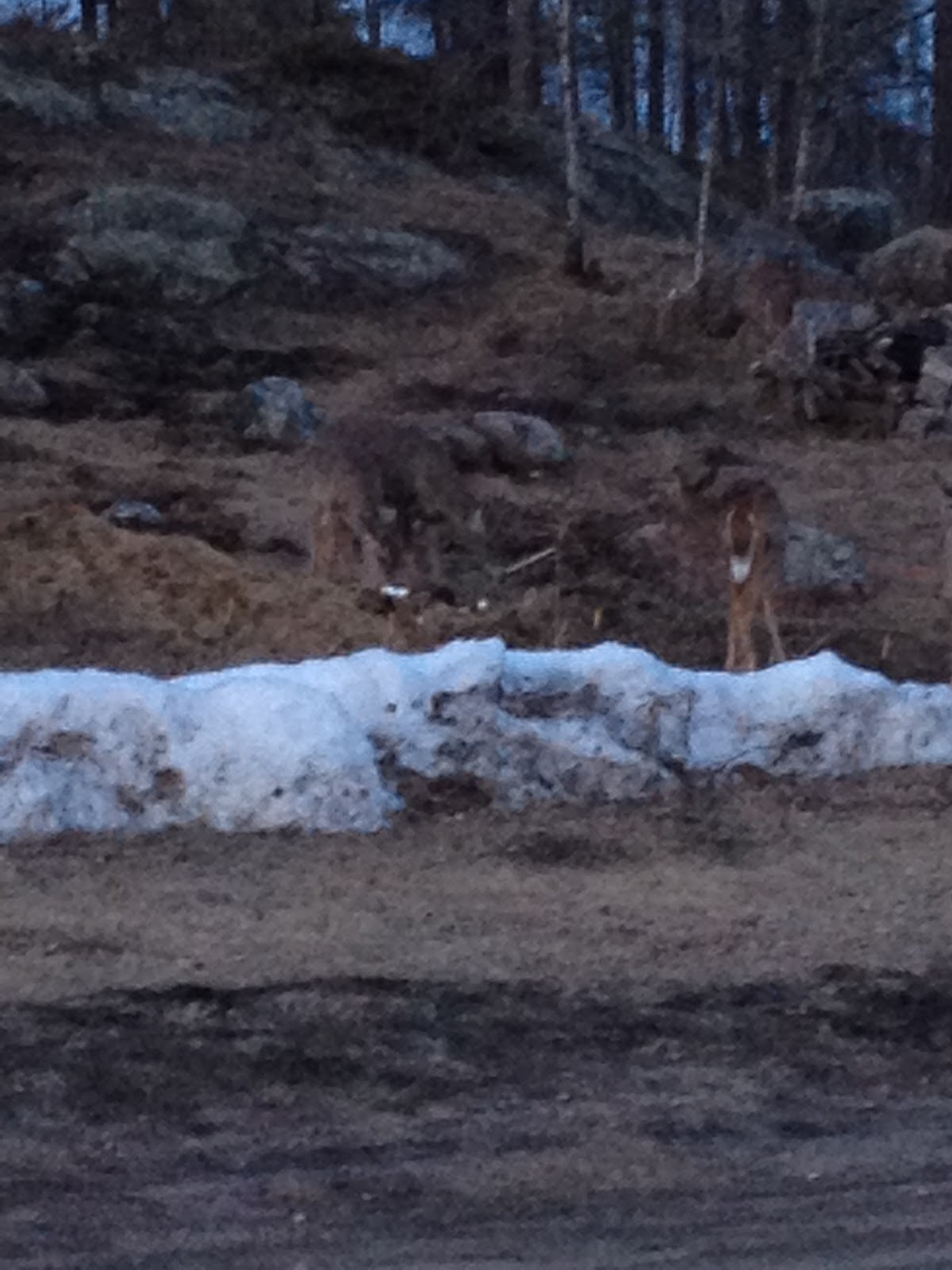 |
| Hard to spot, aren't they? |
In my community, just about everyone has either hit a deer or had multiple near misses in their driving history. Shortly after she got her driver's license and purchased her car, my youngest daughter hit a deer. The damage was so bad the car would have been written off if it wasn't for a great autobody guy who took the time to source a few used parts. Last night I just about hit one. Thanks to the light, I didn't even see the darn thing until it was in the middle of the highway and I was only feet away from it.
I've been told that you shouldn't swerve if you see an animal on the highway because that is more dangerous then hitting it. You could end up in a rollover, rather than just a collision. Don't break hard either if you have vehicle behind you, they might not be able to react fast enough and now instead of hitting one or two hundred pounds of flesh and bone, you are being hit by thousands of pounds of steel.
 |
| Would you have seen these ones? |
 |
| See what I mean about groups? |
I've learned from my own experience driving remote highways that if you spot a deer, while keeping an eye on it, watch both sides of the road because there are often more than one. I know guys who have been watching the one that just crossed only to hit the buddy who is next to cross. In fact, I know a hunter who was so engrossed in watching deer #1 that he hit deer #2 on two separate occasions. Guess sometimes you have to learn things the hard way.
Here in Manitoba, Canada, there are approximately 10,000 deer motor vehicle accidents every year. Considering that there are only 1.2 million people in the province and 60% of them live in cities, and 20% are children, and your odds of hitting a deer are a bit less than 1:50. We have public insurance here in Manitoba, and they even publish maps to inform you of high risk zones for deer/vehicle collisions http://www.mpi.mb.ca/en/PDFs/MBwildlifeMAP.pdf
As well as a list of tips to keep you safe:
Tips to help keep you safe:
Slow down
- When you see wildlife crossing signs
- Especially at dawn, dusk and at night
- Where brush and tall grass grow near the road
- Drive at a speed at which you will be able to stop within the zone of your headlights
Watch carefully
- Scan the roadside for animals -- get your passengers to help
- Watch for the reflection of headlights in the eyes of a deer, or a dark silhouette
- Use your high beams at night but remember to dim them for traffic coming from the other way and when following another vehicle closely
If an animal crosses...
- Dim your headlights—your brights may cause a deer to freeze on the road
- Slow down and be prepared to stop
- Blow your horn to scare the animal away
- Avoid hard swerving—you may lose control
- Brake firmly to reduce the impact between an animal and your vehicle
If you hit an animal...
- Don’t touch it—it may hurt you
- Move your car off the road if possible, and call the police or have someone call for you
No comments:
Post a Comment